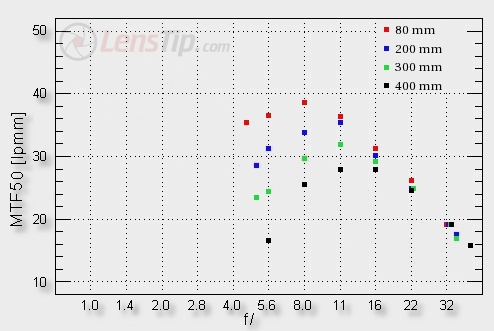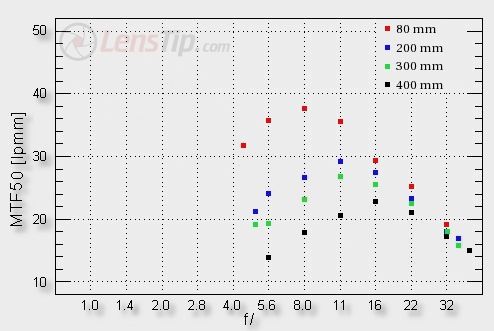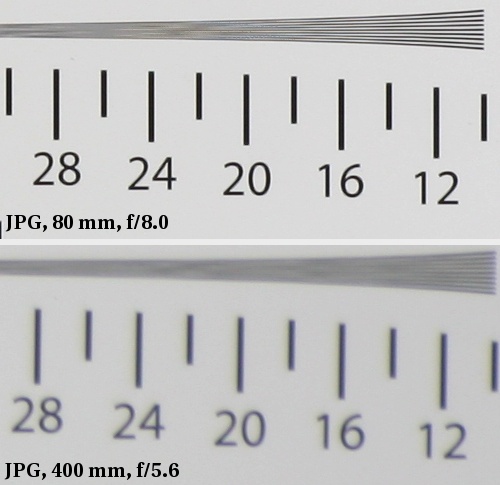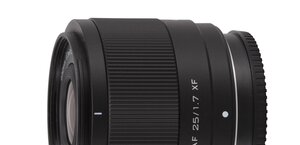Tokina AT-X 840 AF D 80-400 mm f/4.5-5.6
4. Image resolution

What conclusions can we draw from it? First of all, we have to praise an excellent lens’s performance at 80 mm, where it gives image of very good quality even up from the maximum relative aperture. With the increase of the focal length we see a gradual worsening of the results. At the beginning it is so slow that at 200 mm we still can speak about very good performance. At 300 mm it can be called just average, though, and at 400 mm it is just weak, especially at the maximum aperture where the MTFs don’t reach even the level of 20 lpmm.
Please Support UsIf you enjoy our reviews and articles, and you want us to continue our work please, support our website by donating through PayPal. The funds are going to be used for paying our editorial team, renting servers, and equipping our testing studio; only that way we will be able to continue providing you interesting content for free. |
- - - - - - - - - - - - - - - - - - - - - - - - - - - - - - - - - - - - - - - - - - - - - - - -
So far, our opinions have concerned the absolute scale assessment. Our experience teaches us, though, that telephoto zoom lenses don’t fare as well as instruments with shorter focal lengths. It’s difficult to say what is the reason of this; perhaps it’s because of their optics or because of some systematic errors in our tests. That second explanation is even more probable, taking into account the fact that with a focal length over 200 mm any vibrations (even when you work with a cable release, using initial mirror lifting) are more difficult to damp down. The distance between a lens and a test chart is also not without any influence – in the case of the Tokina set at 400 mm it amounted to over 10 meters.
To get rid of such problems it is the best to compare results reached by other instruments with similar parameters. How does the Tokina fare compared to its rivals? As we haven’t tested such a long device so far we are going to compare it to 70-300 mm class lenses tested on the Canon 20D as well so a Sigma 70-300 APO and a Canon 70-300 IS.
At the beginning of the range, so in the 70-80 mm focal lengths range, the Tokina and the Canon perform on an equal footing and they gain a significant advantage over the Sigma. At 200 mm the Sigma and the Tokina draw and the Canon is on the leading position. At 300 mm the Canon is still the best with the Tokina on the second place and the Sigma lagging behind. The Tokina’s 400 mm focal length is at the same level as 300 mm focal length of the Sigma. These results confirm our initial speculations. The Tokina can give really good images in the 80-300 mm range and the 400 mm focal length we get as a bonus to be used in emergencies only.
Many of the frame centre remarks can be repeated in the case of the frame edge performance as well. Once again we can praise a sensational 80 mm results and notice a significant deterioration of image quality with the increase of focal lengths. The lateral chromatic aberration, which increases very quickly (more in the next chapter), makes the image deterioration very steep – at 200 mm the image quality can’t be even assessed as very good, as it was in the case of the frame centre, but average at most. At 400 mm the performance is not even average…

At the very end you can have a glance at medium sharpened JPEG files which we got on a Canon 20D with Parameters 2 setting.
 |






